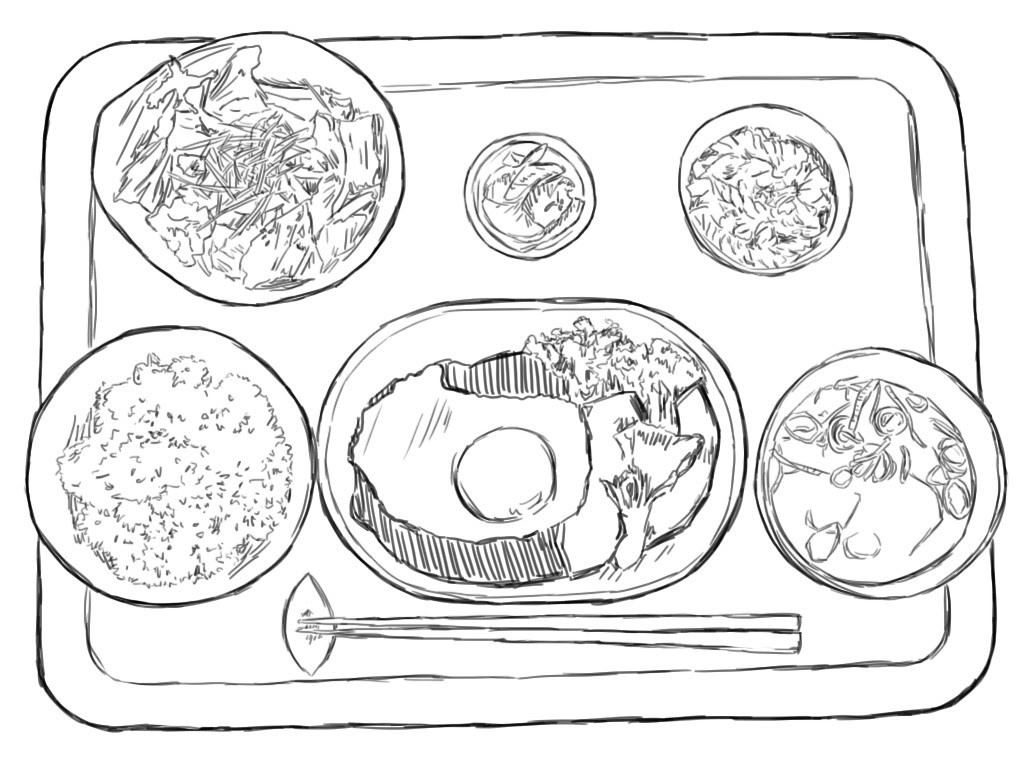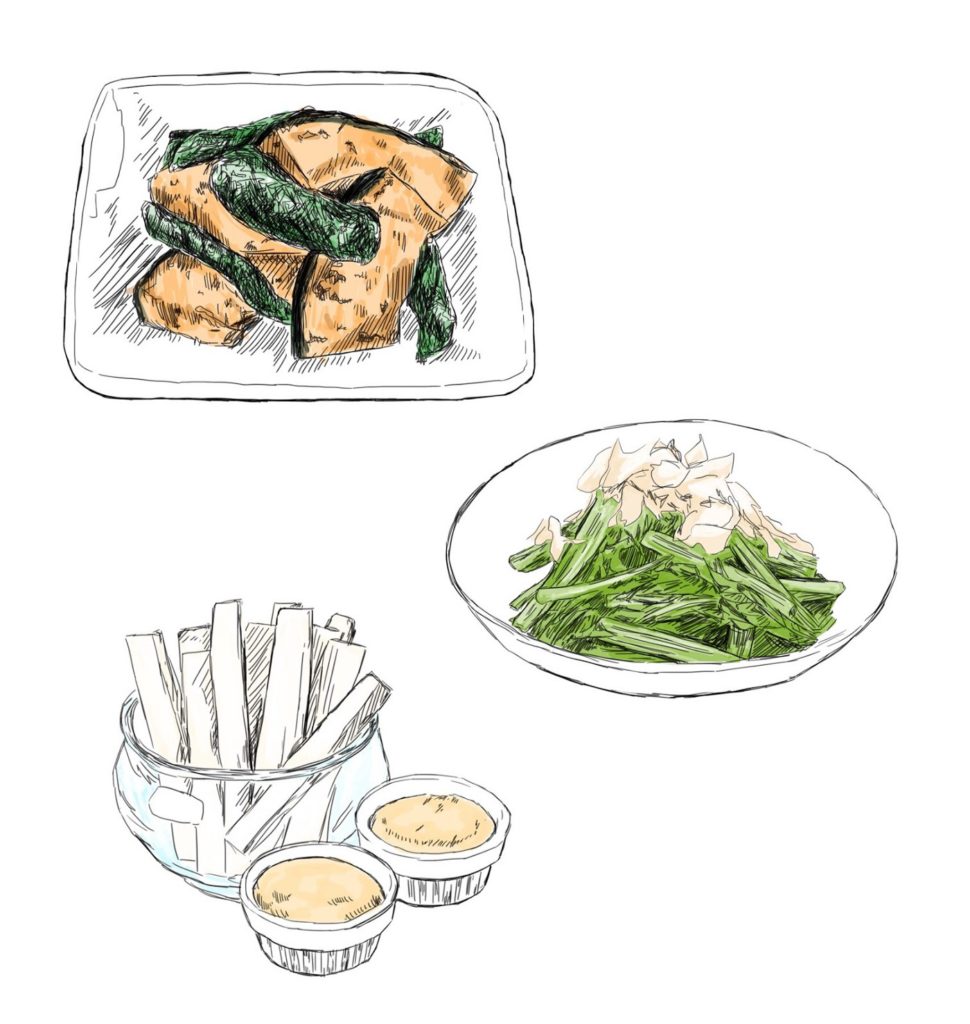
The eating style ichiju-sansai offers lessons in portion size and nutrition
According to the Organization for Economic Cooperation and Development’s (OECD) Obesity Update released in 2017, more than one in two adults and nearly one in six children are overweight or obese in OECD member countries. Despite this global pattern, Japan remains an outlier; its national obesity rate is a mere 6%, and the Japanese are known for longevity.
Japan is a curious case study, because despite its health stats, the available food, nutrition education, and provided health care is comparable to other OECD countries. So what’s causing the divergence?
Growing up in both the United States and Japan has made it apparent to me that it’s not just the food we eat that affects our health but also how we eat. Instead of an entire meal in a big bowl or on a large plate like in the United States, my meals in Japan consistently take this form: a small bowl of rice, a soup, and three side dishes.
Ichiju-sansai: One soup, three sides
Ichiju-sansai is a term used to describe the way traditional Japanese teishoku-style meals are constructed. It literally translates to “one soup, three sides” (or 「一汁三菜」), and most Japanese people eat like this, almost subconsciously.

Ichiju-sansai is an eating style that has three main benefits.
1. Balanced variety
Diversity in flavor and ingredients is built into ichiju-sansai. The soup is frequently a variation of miso soup, and the three side dishes usually consist of one protein-based dish and two vegetable-based dishes. “One soup, three sides” is a practical way for us to think about the way we consume food so we can get a variety of vegetables, proteins, and carbohydrates into our diet. Without relying on too much of one thing, we are able to diversify our diet portfolio and ensure that our bodies get the nutrients we need to function optimally.

Almost every Japanese household will have a rice cooker, a box of miso paste in the fridge, and a selection of small Tupperware in their cabinet to prep for ichiju-sansai meals. In fact, Japanese households take their rice so seriously that many will invest in high-end pressure cookers that cost $200 and up to get that perfect rice — because if you’re eating rice every day, it’s worth investing in perfection.
“One soup, three sides” is a practical way for us to think about the way we consume food so we can get a variety of vegetables, proteins, and carbohydrates into our diet.
2. Measured portions
The single-serving portions of ichiju-sansai mean that we can actually enjoy the foods we love without feeling guilty or prone to excessive indulging later on. Nothing is necessarily off-limits, as long as we measure a single serving for ourselves. In this way, we can still enjoy fried chicken or a creamy soup without seeing it as a guilty pleasure. These foods can just as easily provide us with the proteins and fats we need in our diet, as long as we don’t overdo it.
3. Mindful eating
It’s too easy to sit in front of a laptop and read emails or watch Netflix in bed with a large bowl of food for dinner. I’m occasionally guilty of this habit. When we eat while distracted, there are some obvious psychological downsides, such as the fact that our brain doesn’t process our eating and we end up eating too quickly. We therefore often feel unsatisfied or bloated when we’re finished.
But when your meal consists of a selection of different foods and food types, it encourages you to sit down at a proper table and focus. You can’t (or you can but only with extreme difficulty) eat an ichiju-sansai-style meal on the couch. The different small plates, flavors, and food types are key to eating in a manner that supports healthy habits.

There’s scientific reasoning behind mindful eating: People need to be in a parasympathetic state to properly digest food. We need our nervous system to be in this “rest and digest” mode so our salivary glands can release the amylase required to begin the chemical breakdown of starches.
The parasympathetic state also signals to the pancreas to secrete digestive enzymes to complete the breakdown of food in our small intestine, promoting proper function. Under stress, our bodies aren’t able to break down food and absorb these nutrients, and we may experience a variety of incorrect signals, such as hunger or stomach discomfort. Over the long term, we can see how this sort of digestive dysfunction can lead to chronic overeating and digestive issues.
Ichiju-sansai in practice
Ichiju-sansai is a meal setup you may encounter in many restaurants in Japan. Everything is served on small, single-serving plates or bowls. This kind of eating is neither new nor trendy, nor is it casual or high end. This is just how Japanese meals have traditionally been served for years.
Ichiju-sansai is, of course, practiced in the home as well. Using my Tupperware to make different side dishes in bulk and a rice cooker that’s always full of perfectly pressure-cooked rice, I’m able to quickly construct well-balanced meals.
There is a lot to learn from Japanese food culture. While most people don’t necessarily wish to live to be 120 years old, we do hope to age gracefully, unburdened by alarmingly common diseases like cardiovascular disease, diabetes, or dementia — hopefully without having to exert an insane level of self-discipline. The lesson of ichiju-sansai is that we can mitigate our risk—without depriving ourselves of joy—by paying attention to how we eat.

If you enjoyed this piece, let me know at my email kokumura@kakikata.space 😊 I would love to hear from you!
Warm regards,
Kaki
[…] You write about ichiju sansai (small plate meals). The intricacy of those meals are picture worthy. The colors and beauty demand our attention. Our […]